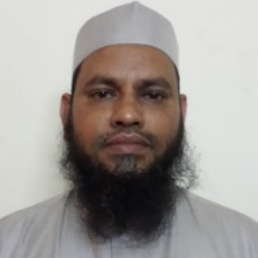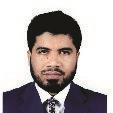International Journal of Image, Graphics and Signal Processing (IJIGSP)
IJIGSP Vol. 11, No. 1, 8 Jan. 2019
Cover page and Table of Contents: PDF (size: 1080KB)
Recognizing Bangla Handwritten Numeral Utilizing Deep Long Short Term Memory
Full Text (PDF, 1080KB), PP.23-32
Views: 0 Downloads: 0
Author(s)
Index Terms
Bangla Handwritten Numeral, Long Short Term Memory, Deep Neural Networks
Abstract
Handwritten numeral recognition (HNR) has gained much attention in present days as it can be applied in range of applications. Research on unconstrained HNR has shown impressive progress in few scripts but is far behind for Bangla although it is one of the major languages. Bangla contains similar shaped numerals which are difficult to distinguish even in printed form and this makes Bangla HNR (BHNR) a challenging task. Our goal in this study is to build up a superior BHNR framework and consequently explore the profound design of Long Short Term Memory (LSTM) method. LSTM is a variation of Recurrent Neural Network and is effectively used for sequence ordering with its distinct features. This study considered deep architecture of LSTM for better performance. The proposed BHNR with deep LSTM (BNHR-DLSTM) standardizes the composed numeral images first and then utilizes two layers of LSTM to characterize singular numerals. Benchmark dataset with 22000 handwritten numerals having various shapes, sizes and varieties are utilized to examine the proficiency of BNHR-DLSTM. The proposed method indicates agreeable recognition precision and beat other conspicuous existing methods.
Cite This Paper
Mahtab Ahmed, M. A. H. Akhand, M. M. Hafizur Rahman, " Recognizing Bangla Handwritten Numeral Utilizing Deep Long Short Term Memory", International Journal of Image, Graphics and Signal Processing(IJIGSP), Vol.11, No.1, pp. 23-32, 2019. DOI: 10.5815/ijigsp.2019.01.03
Reference
[1]R. Plamondon and S. N. Srihari, “On-line and off-line handwritten recognition: A comprehensive survey,” IEEE Trans. on Pattern Analysis and Machine Intelligence, vol. 22, pp. 62-84, 2000.
[2]U. Pal, C. B. B. Chaudhuri and A. Belaid, “A System for Bangla Handwritten Numeral Recognition,” IETE Journal of Research, Institution of Electronics and Telecommunication Engineers, vol. 52, pp. 27-34, 2006.
[3]S. Basu, R. Sarkar, N. Das, M. Kundu, M. Nasipuri and D. K. Basu, “Handwritten Bangla Digit Recognition Using Classifier Combination Through DS Technique,” LNCS, vol. 3776, pp. 236–241, 2005.
[4]Wikipedia, “List of languages by number of native users,” Retrieved October 13, 2015, from https://en.wikipedia.org/wiki/List_of_languages_by_number_of_native_users
[5]M. M. R. Khan, S. M. A. Rahman and M. M. Alam, “Bangla Handwritten Digits Recognition using Evolutionary Artificial Neural Networks,” in Proc. of the 7th International Conference on Computer and Information Technology (ICCIT 2004), December 26-28, Dhaka, Bangladesh, 2004.
[6]U. Bhattacharya and B. B. Chaudhuri, “Handwritten numeral databases of Indian scripts and multistage recognition of mixed numerals,” IEEE Trans. on Pattern Analysis and Machine Intelligence, vol. 31, pp. 444-457, 2009.
[7]Y. Wen, Y. Lu and P. Shi, “Handwritten Bangla numeral recognition system and its application to postal automation,” Pattern Recognition, vol. 40, pp. 99-107, 2007.
[8]N. Das, R. Sarkar, S. Basu, M. Kundu, M. Nasipuri and D. K. Basu, “A genetic algorithm based region sampling for selection of local features in handwritten digit recognition application,” Applied Soft Computing, vol. 12, pp. 1592-1606, 2012.
[9]M. K. Nasir and M. S. Uddin, “Hand Written Bangla Numerals Recognition for Automated Postal System,” IOSR Journal of Computer Engineering, vol. 8, pp. 43-48, 2013.
[10]M. A. H. Akhand, M. M. Rahman, P. C. Shill, S. Islam & M. M. H. Rahman, “Bangla handwritten numeral recognition using convolutional neural network,” International Conference on Electrical Engineering and Information & Communication Technology, PP. 1-5, May 21-23, Dhaka, Bangladesh, 2015.
[11]M. R. Bashar, M. A. F. Hasan, M. A. Hossain and D. Das, “Handwritten Bangla Numerical Digit Recognition using Histogram Technique,” Asian Journal of Information Technology, vol. 3, pp. 611-615, 2014.
[12]Y. Wen and L. He, “A classifier for Bangla handwritten numeral recognition,” Expert Systems with Applications, vol. 39, pp. 948-953, 2012.
[13]Mahtab Ahmed, P. C. Shill, K. Islam and M. A. H. Akhand, “Acoustic Modeling of Bangla Words using Deep Belief Network,” International Journal of Image, Graphics and Signal Processing, vol. 7, pp. 19-27, 2015.
[14]A. Roy, S. Rajeswar and S. Chaudhury, “Text reognition using deep BLSTM networks,” International conference on advances in pattern recognition (ICAPR), pp. 1- 6, January 4-7, Kolkata, India, 2015.
[15]Vanishing gradient problem Retrieved October 13, 2015 Available:https://en.wikipedia.org/wiki/Vanishing_gradient_problem
[16]S. Hochreiter, Y. Bengio, P. Frasconi, and J. Schmidhuber, “Gradient flow in recurrent nets: the difficulty of learning long-term dependencies. A Field Guide to Dynamical Recurrent Neural Networks,” IEEE Press, 2001.
[17]S. Hochreiter and J. Schmidhuber, “Long short-term memory,” Neural Computation, vol. 9, pp. 1735–1780, 1997.


